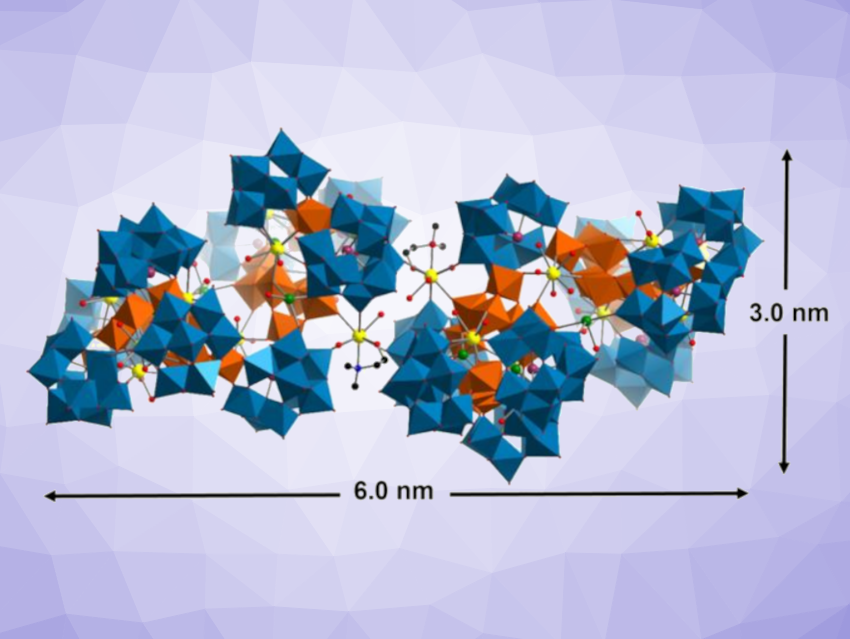Heterometallic polyoxometalate (POM) clusters feature precise structures as well as adjustable and abundant active sites. They are promising, e.g., for constructing functional nanodrugs. Large heterometallic POMs can be constructed by the aggregation of POM building units using lanthanide and transition-metal linkers. However, giant transition-metal–lanthanide co-encapsulated POM nanoclusters with more than 100 metal centers are still relatively rare.
Large POMs could be useful in tumor treatment. Silver-based materials, for example, have shown anti-tumor activity in radiation sensitizers and apoptosis agents. However, no large POMs with Ag+ active centers have been used to treat tumors in the brain due to the blood-brain barrier, poor tumor targeting, and low drug activity.
Junwei Zhao, Henan University, Kaifeng, China, and colleagues have designed the largest transition-metal–lanthanide co-encapsulated POM cluster, {[Ce10Ag6(DMEA)(H2O)27W22O70][B-α-TeW9O33]9}288– (pictured, 3.0 nm × 6.0 nm, DMEA = N,N-dimethylethanolamine). The cluster features 238 metal centers and is constructed by using Ce3+ and Ag+-based linkers to connect tungsten-oxo cluster units.
The POM was combined with a brain-targeted peptide to prepare a targeted nanodrug that could efficiently cross the blood-brain barrier and target glioma cells (a type of brain cancer). The Ag+ active centers in the nanodrug activate reactive oxygen species to regulate glioma cell apoptosis pathways. The POM-based nanodrug showed efficient tumor inhibition and prolonged survival in glioma-bearing mice.
- A Giant Heterometallic Polyoxometalate Nanocluster for Enhanced Brain‐Targeted Glioma Therapy,
Nizi Song, Mengya Lu, Jiancai Liu, Ming Lin, Ping Shangguan, Jiefei Wang, Bingyang Shi, Junwei Zhao,
Angew. Chem. Int. Ed. 2024.
https://doi.org/10.1002/anie.202319700




